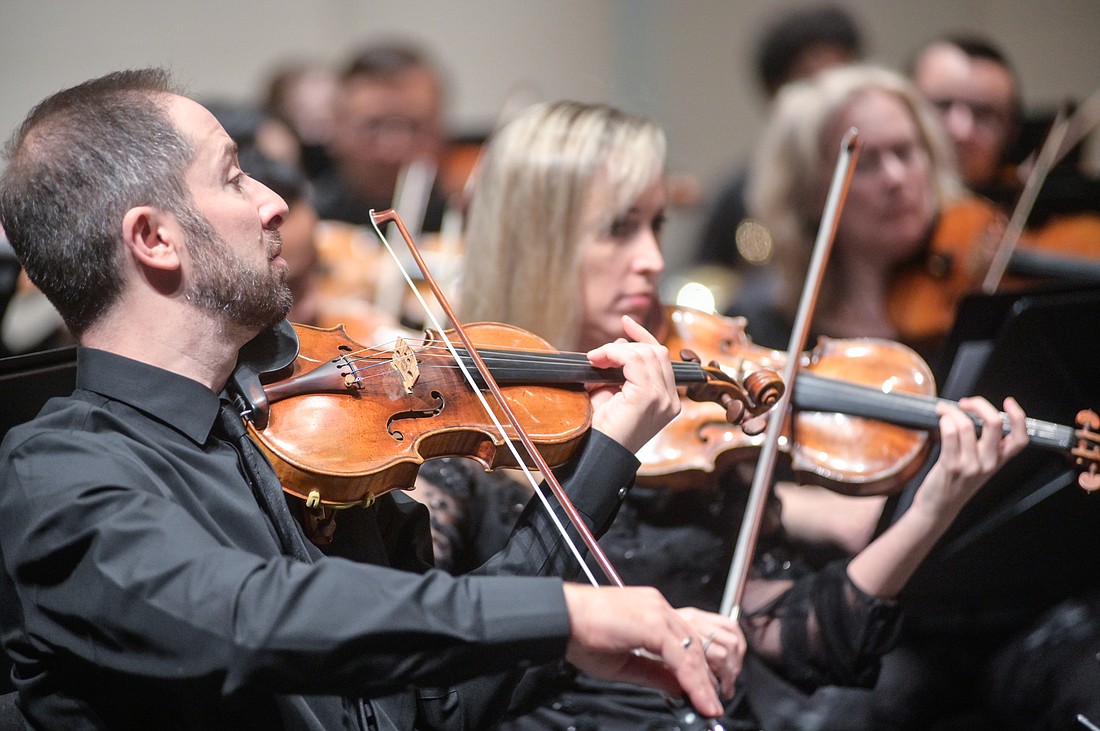- May 12, 2025
-
-
Loading

Loading

Kerry Smith, director of artistic planning for the Sarasota Orchestra, typically has some time to help put together the organization's annual season. For nine months of the year, Smith and Sarasota Orchestra artistic advisor Jeffrey Kahane work together to create a lineup of musical pieces they hope will be interesting and engaging.
This year, she has considerably less time — around two and a half months.
“Little has changed since March in terms of some level of normalcy,” President and CEO Joseph McKenna said. “We called Kerry and said ‘We have to put together a program that can be socially distanced and safe … How do we put together something that will work, and if there are advances medically in six months, maybe we can sort of be flexible and expand out a little bit. That was the directive we gave to Kerry, who then worked with Jeffrey.”
It was an intense experience — Smith likened consuming and considering such an amount of music in a short period of time to a tornado — but a fruitful one.
After weeks of intense work and planning, the Sarasota Orchestra has announced its reimagined season of music and performances that will start in November. The fall and spring lineup will have lesser-known works from established artists, pop concerts, and more. The orchestra will also celebrate Beethoven’s 250th with a December concert featuring works from the Sarasota String Quartet.
“(Joe) said it’s a reassembled season, but it’s more like bulldozing and rebuilding from the ground up,” Smith said. “... When you're thinking about repertoires, you never think “Oh, what piece will move and touch people and also the players will be six feet away from me.”
Rather than having the usual instruments and sounds found in an orchestral production, this season’s lineup will focus on music from string instruments. That has a health benefit where performers will be able to wear masks, as opposed to wind instruments. The plan is to reintegrate the orchestra’s brass and woodwind players in the spring if pandemic conditions improve.
Every performance will be held at Holley Hall stage at 20% capacity. Each show will be an hour and the theater will be deep cleaned between performances. Tickets will be split between subscribers and general audience members with a planned lottery system.
The season’s performances will have 15 performers on stage, which is also more of a safety choice than an artistic one. Greenfield says that, when measured, 15 performers can take the Holley Hall stage while being spaced six feet apart from one another.
Smith has worked remotely with Kahane, who is based in California. She likens it to a 19th-century friendship with a 21st century twist. The pair have constantly exchanged emails back and forth as the season’s programming took shape. Being able to highlight relatively unknown works from the Bach family and others is a silver lining to an unusual season.
As is custom in the modern era, the season’s performances will also be streamed online for a fee for arts enthusiasts wishing to stay home.
It’s going to be a different experience for attendees, that much is certain. A smaller orchestra group putting on music for 50 people rather than a few hundred was always a different situation, but McKenna thinks live music in that smaller setting can provide an intimacy and reflectiveness that can be powerfu.
“There's something kind of sacred about the exchange between musicians or performers and an audience,” Smith said. “I think our musicians are just so thrilled to be coming back to do that.”